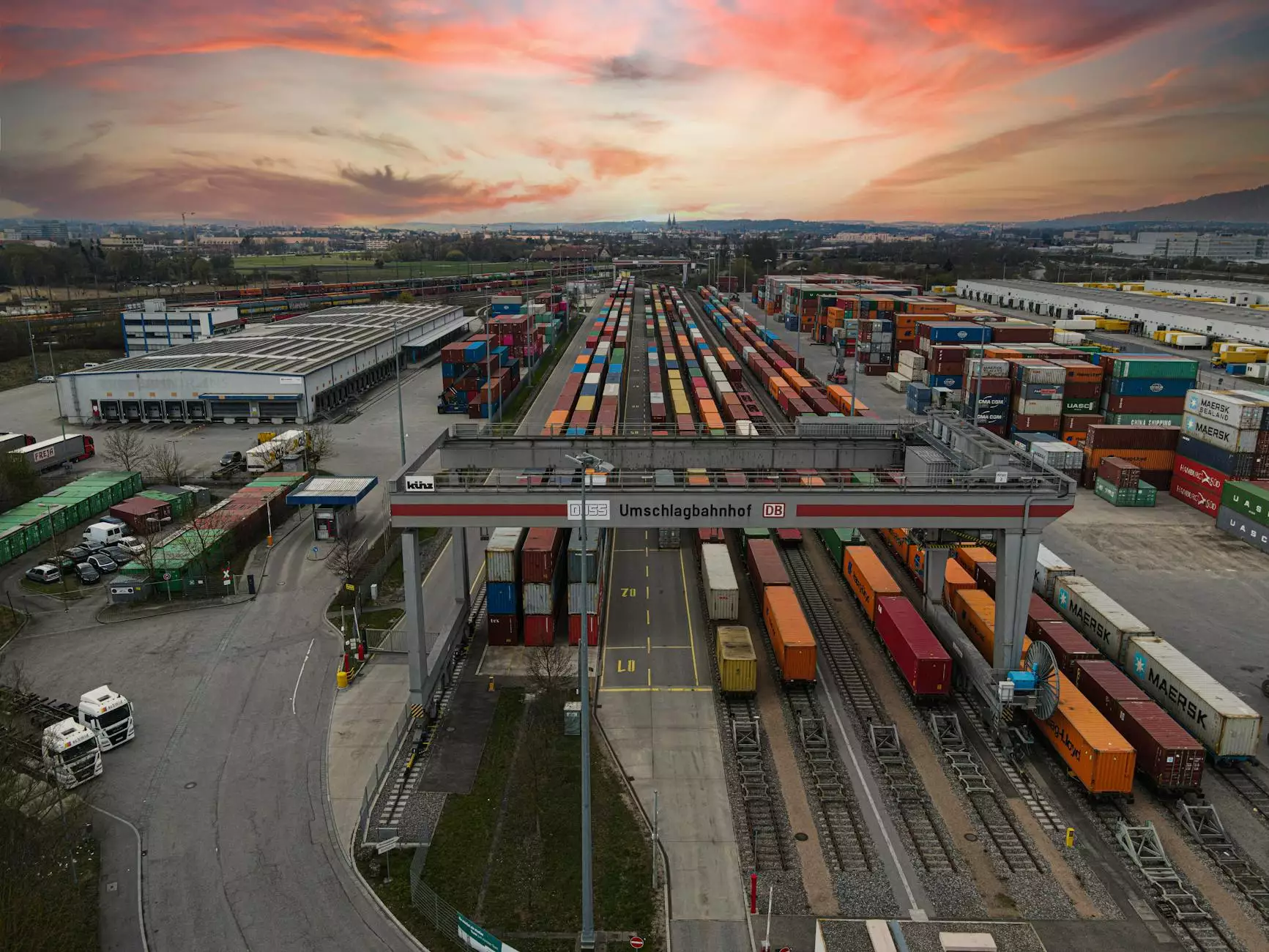Understanding Air Freight Rates: A Comprehensive Guide for Businesses

The globalized economy has transformed the way businesses operate, particularly in the realm of logistics and shipping. In this context, air freight has emerged as a crucial component of supply chain management, enabling swift and reliable transportation of goods across international borders. However, navigating the intricate landscape of air freight rates can be daunting for businesses. This article aims to demystify air freight rates, highlighting their components, factors influencing their variability, and strategies for optimizing costs.
What Are Air Freight Rates?
Air freight rates refer to the charges applied for transporting goods via air. Unlike ocean freight, which typically charges on a per-container basis, air freight costs are often calculated based on weight or volume, with the greater of the two determining the cost. Understanding these rates is essential for businesses looking to maintain profitability while ensuring timely deliveries.
The Components of Air Freight Rates
Several elements come into play when calculating air freight rates. Understanding these components is vital for businesses seeking transparency and cost-effectiveness in their logistics operations.
- Base Rate: This is the core charge for transporting goods and varies depending on the airline and route.
- Fuel Surcharge: A fluctuating fee added to cover the cost of fuel, often a significant part of total freight charges.
- Secured Delivery Charge: An additional fee to ensure the shipment's safety, especially for high-value goods.
- Dimensional Weight: Airlines use dimensional weight pricing to account for larger packages that take up more space in the cargo hold, even if they are light.
- Handling Fees: Charges related to loading and unloading goods at the airport, which can vary depending on the facility.
- Insurance: Optional coverage to protect shipment value, particularly important for high-value items.
- Customs Clearance Fees: Costs related to processing shipments through customs, critical for international freight.
Factors Influencing Air Freight Rates
Several key factors influence air freight rates. Understanding these factors can help businesses make informed decisions regarding their logistics strategies.
1. Distance and Route
The distance between origin and destination significantly affects freight costs. Longer routes often come with higher charges due to increased fuel consumption and delivery time. Additionally, shipping routes with less competition may see higher rates due to limited options.
2. Capacity and Demand
The balance between available cargo space and demand for air freight services leads to fluctuations in rates. During peak seasons, such as holidays, demand often exceeds capacity, driving prices up.
3. Weight and Volume
As mentioned previously, air freight providers often charge based on the greater of actual weight or dimensional weight. Businesses need to properly estimate weights and dimensions to avoid unexpected costs.
4. Type of Goods
The nature of the goods being shipped can also affect air freight rates. Hazardous materials, perishables, and high-value items may incur additional handling and insurance fees, increasing overall shipping costs.
5. Economic Factors
Global economic conditions, including fuel prices, labor costs, and geopolitical issues, can impact air freight rates. For example, a spike in fuel prices may lead to higher fuel surcharges, while trade tariffs can affect import/export costs.
How Businesses Can Optimize Air Freight Costs
Optimizing air freight rates is crucial for maintaining profit margins while ensuring timely delivery. Here are strategies businesses can implement:
1. Partner with Reliable Freight Forwarders
Choosing a trustworthy freight forwarder can provide access to better rates and services. Freight forwarders often have established relationships with airlines, allowing them to negotiate competitive pricing and secure space during peak seasons.
2. Use Technology for Shipment Tracking
Implementing tracking technology enables businesses to monitor shipments in real-time, reducing delays and unexpected costs due to lost or delayed packages. Systems that alert you to changes in transit can facilitate proactive adjustments.
3. Consolidate Shipments
Consolidating multiple shipments into one can reduce overall freight costs. By pooling goods destined for the same location, businesses can take advantage of lower per-unit shipping rates.
4. Negotiate Contracts with Airlines
Establishing long-term relationships with airlines can provide leverage in negotiating rates. Businesses that frequently ship can request volume discounts based on their shipping history and reliability.
5. Plan Ahead
Proactive planning can mitigate emergency shipping costs. By anticipating business needs and scheduling shipments in advance, companies can take advantage of lower rates and avoid premium pricing due to last-minute arrangements.
The Role of Shipping Centers
Shipping centers play an integral role in the efficiency of air freight. Located strategically near airports, these centers facilitate quick processing times and streamlined logistics operations. They serve as vital hubs for consolidating shipments, handling customs clearance, and managing freight forwarding. Businesses should consider utilizing shipping centers for:
- Faster Processing: Enhanced workflow ensures quicker turnaround times for shipments.
- Cost-Effective Solutions: Economies of scale can lead to reduced shipping costs.
- Improved Coordination: Seamless connection between air freight and last-mile delivery solutions.
The Importance of Transportation Networks
Efficient transportation networks are essential for minimizing air freight rates and ensuring timely deliveries. Integrating different modes of transport, such as road and rail, can optimize logistics and provide door-to-door service. Businesses should evaluate their transportation options, considering:
- Last-Mile Delivery: Partnering with reliable local carriers for efficient final leg delivery can enhance customer satisfaction.
- Intermodal Transport: Utilizing multiple transport modes can reduce costs and transit times.
- Real-Time Tracking: Investing in a tracking system can provide valuable insights into shipment status and improve transparency.
The Future of Air Freight Rates
As global trade continues to evolve, air freight rates will likely experience further changes driven by emerging technologies and economic shifts. The rise of e-commerce has already influenced demand for faster shipping solutions, suggesting that businesses should stay ahead of trends to remain competitive.
- Embracing Technology: The adoption of automation and artificial intelligence in logistics operations can lead to greater efficiency and potential cost savings.
- Environmental Considerations: With increasing focus on sustainability, eco-friendly practices and fuel-efficient transport options may play a role in shaping air freight pricing.
- Market Fluctuations: Businesses must remain vigilant about market trends, adjusting their strategies to mitigate the impact of rising air freight rates.
Conclusion
Understanding air freight rates is vital for businesses aiming to optimize their logistics strategies and maintain competitiveness in the global market. By recognizing the components that affect these rates, implementing effective cost-saving strategies, and leveraging the role of shipping centers and transportation networks, companies can navigate the complexities of air freight with confidence.
As the landscape of international shipping continues to evolve, businesses that proactively adapt to changes and invest in efficient logistics solutions will be best positioned to succeed in this dynamic environment. For more insights and to find trusted logistics partners, visit cargobooking.aero and enhance your shipping strategies today!









